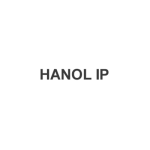Recently, the Korean Patent Court rendered a favourable decision on the patentability of medical use inventions in which strict scrutiny was employed for two aspects of the enablement and inventiveness requirements.
In the decision (Patent Court Decision 2019Heo4147, February 7 2020), the court decided that for a medical use invention directed to a pharmaceutical combination of four anti-cancer agents for use in a particular therapy, the prior-published clinical trial “protocol”, which is a mere plan to conduct a clinical study in the future to determine whether the combination works in treating a particular disease, fails to destroy or negate the novelty and inventiveness of the claimed invention.
Background
In many places including Korea, the US, Europe, and Japan, it is mandatory to publish clinical trial information such as protocol and study results. In the case of Korea, there is a relatively high threshold for patentability with respect to the enablement of medical use inventions. Experimental data for the pharmacological effect underlying the invention should be included in the original specification unless the pharmacological mechanism was already known. In some cases, in vitro studies may be sufficient to support or enable the claims. However, for medical use inventions such as combination therapies, dosage regimens, etc. clinical trials may be necessary for enablement. Thus it seems that at least the clinical protocol will inevitably become public before patent filing. In local practice, these prior-published clinical protocols, which are merely plans and have no study results (i.e. no concrete data), have been cited to negate novelty or inventiveness despite insufficient disclosure. Considering the fact that concrete pharmacological data is required in order to fulfil the enablement requirement as mentioned above, this practice may constitute the imposition of a double standard. The situation above was addressed in the present case.
Facts/case history
The claims at issue are directed to a pharmaceutical combination for use in neoadjuvant treatment of early-stage HER2-positive breast cancer in a patient, comprising pertuzumab, trastuzumab, and carboplatin-based chemotherapeutic agents, wherein the chemotherapeutic agents comprise docetaxel and carboplatin.
A prior art reference disclosed clinical trial information posted on the ClinicalTrials.gov website, relating to a mere clinical protocol on the phase II clinical study of the neoadjuvant treatment of early-stage HER2-positive breast cancer with the four anti-cancer agents pertuzumab, trastuzumab, docetaxel, and carboplatin. The results of the study were not published in the reference.
The examiner rejected the claims for lacking novelty and an inventive step over the reference, and the Intellectual Property Trial and Appeal Board (IPTAB) also affirmed the examiner’s rejection. The IPTAB found that the claims lacked novelty because the reference disclosed the same neoadjuvant treatment using the pharmaceutical combination of four anti-cancer agents, and the pharmacological effect is merely an inherent property of the combination. As a ground for denying the inventiveness, the IPTAB stated that since the reference relates to a “phase II” clinical trial protocol, there would have been sufficient motivation or hints as to the therapeutic effect of the pharmaceutical composition in view of the situation that the pharmacological effect must have already been confirmed through previous pre-clinical trials.
Patent Court decision
The Patent Court overturned the IPTAB’s decision, mainly addressing the following three issues.
1) Does the reference qualify as prior art?
Firstly, the Patent Court determined that even if a reference related to a medical use invention is considered as “an incomplete invention” for lacking disclosure of the pharmacological effect, such reference can only be prior art to the extent that those skilled in the art would have understood the disclosure. The Patent Court then found that upon reading the reference in light of common knowledge in the art, where it is recognised that the efficacy of a combination of known anti-cancer drugs can be directly confirmed by a phase II clinical trial without pre-clinical or phase I clinical trials, those skilled in the art would have understood that the efficacy of the combination might not be confirmed until the actual implementation of the phase II clinical trial, and that such phase II clinical trial would be conducted in the future. As such, the Patent Court acknowledged that the reference can constitute prior art to such an extent.
2) Is the disclosure of the reference regarded as destroying novelty?
The Patent Court found that the reference was merely a plan to conduct a clinical trial, and that the disclosure was not sufficient to the extent that those skilled in the art would have been able to objectively confirm the pharmacological effect. Thus, contrary to the IPTAB, the Patent Court considered that the disclosure of the reference is not identical to the claimed invention.
3) Is the pharmacological effect of the claimed invention predictable from the reference?
Differing from the IPTAB, the Patent Court held that it cannot be said that those skilled in the art would have been able to expect what pharmacological effect the claimed combination would exert by relying on the mere fact that a clinical study with a particular anti-cancer combination was to be conducted. In this regard, the Patent Court pointed out that: i) the reference did not describe any clinical results and no other prior art references were cited; and ii) since co-administration of two drugs may cause drug–drug interactions to thereby result in stronger or weaker effects compared to each drug alone, those skilled in the art would not have been able to easily predict whether the combination of known anti-cancer agents would have synergistic effects.
This Patent Court decision became final and conclusive on March 3 2020, as there was no appeal; ultimately, the claims at issue were granted.
Remarks
Although the question of whether clinical trial information constitutes relevant prior art should be determined on a case-by-case basis, this decision may provide some guidance in similar cases. Even though clinical trials are indispensable in supporting or enabling the claims and the timing of patent filing may be delayed to meet the description requirement, it is not all doom and gloom for pharmaceutical companies seeking patent protection for medical use inventions in Korea. There are still ways to protect such inventions by considering the lessons from this case.
Min Son
Partner, Hanol IP & Law












